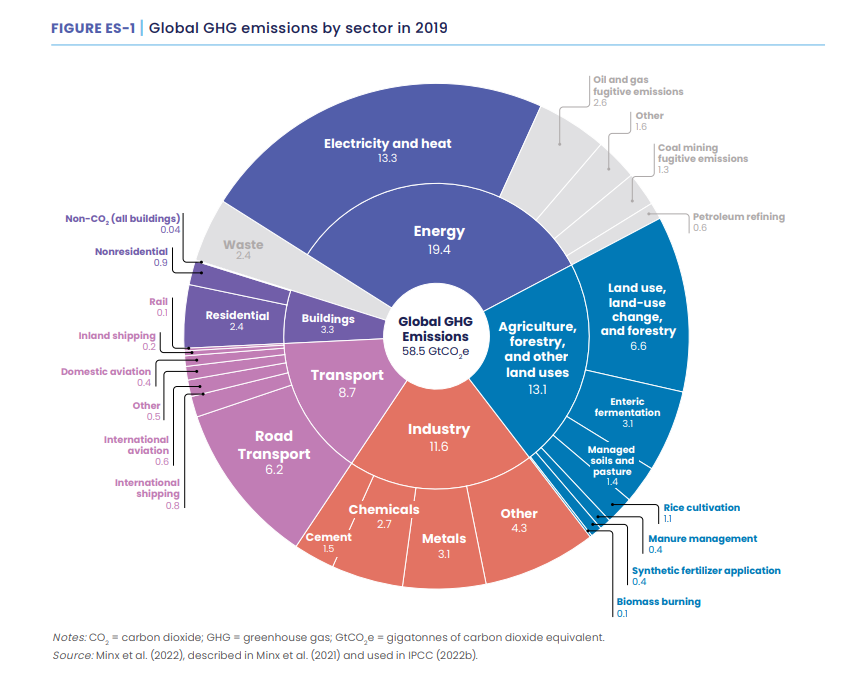The importance of limiting global warming to 1.5 degrees Celsius is widely recognized, but the necessary systemic change is not happening nearly fast enough.
Many targets set for 2030 remain unmet, and emissions continue to rise. Although there are signs of progress, without significantly accelerated action, the window to limit global warming to “acceptable” levels is closing.
In a new report, the Systems Change Lab, a coalition of bodies pursuing positive climate action, examines progress on 40 change indicators and gaps are highlighted. These indicators are key measures of the systemic changes needed to halve global emissions by 2030 to keep global warming at 1.5 degrees.

Progress towards efficiency
Progress has been made in the 40 areas assessed, but it is insufficient in 6 areas and far below the required rate in 21. We are moving in the wrong direction in five areas, and there is not enough information to assess the remaining eight.
The increase in the use of gas in electricity production is particularly problematic, despite the goals regarding the priority of green energy and the continuous increase in emissions from steel production. Car use continues to grow, as do agricultural emissions. And efforts to grow the important mangrove forest species, an important natural carbon sink, are also failing.
However, there are bright spots. The share of electricity produced by renewable energy sources has increased from 20 percent in 1990 to 29 percent in 2020. Battery prices have fallen significantly, making new electric vehicles (EV) comparable in price to fossil fuel alternatives. And hand-in-hand, sales of electric cars are growing, and many countries are setting deadlines for phasing out new gasoline and diesel cars.
As the authors of the report note, these changes did not happen by themselves. They show what can be achieved through coordinated and collaborative action, supportive policies, and investment from policymakers and industry.
The annual Conference of the Parties (COP), which brings together political and business leaders as well as climate experts and activists, is one such opportunity for action. One of the main achievements of this year’s COP27 was the agreement to pay compensation to vulnerable countries affected by climate change.

Ani Dasgupta, director general of the World Resources Institute (WRI), one of the organizations responsible for the report, told The Guardian: “The world has seen the devastation caused by just 1.1°C of warming.” “Every fraction of a degree is important in the fight to protect people and the planet.” We are seeing significant progress in the fight against climate change, but we are still not winning in any area.
Here are seven steps we need to take if we want to meet our 1.5°C limit, according to the WRI.
1. Stop coal production six times faster: This is equivalent to removing 925 medium-sized coal-fired power plants per year. A sharp decline in the use of coal during the pandemic led to a decrease in the coal intensity of electricity generation, but it is expected to recover strongly.
2. Increase the energy intensity of buildings five times faster in commercial buildings and seven times faster in residential buildings. The energy intensity of buildings decreased in the 2000s and early 2010s, but the trend has since moderated.
3. Reduce carbon dioxide emissions per ton of cement produced more than 10 times faster. Cement production is a particularly carbon-intensive process, although technologies are emerging that recycle cement and use it as a carbon source itself.
4.Expand mass transit systems, including subways, light rail, and bus rapid transit networks, in the world’s most polluting cities six times faster. According to the report, politicians around the world continue to allocate too little money to public transport and enable walking and cycling. New developments too often favor car travel over affordable and resource-efficient alternatives.
5. Reduce the annual rate of deforestation two and a half times faster—equivalent to avoiding deforestation in an area roughly equal to the entire agricultural land of Switzerland. Halting deforestation, peat degradation, and mangrove loss is critical to meeting and mitigating near-term carbon targets.
6. Move five times faster to a healthier and more sustainable diet by reducing ruminant meat consumption per capita to two hamburgers per week in Europe, America, and Oceania. Governments and companies should promote changes to a low-carbohydrate diet.
7. End public financing of fossil fuels five times faster—equivalent to reducing subsidies by an average of $69 billion per year. The easing of lockdown restrictions and the war in Ukraine boosted subsidies. And while full figures for 2021 or 2022 are not yet available, production and consumption subsidies in 51 major economies that account for 85 percent of global energy supply nearly doubled from 2020 levels to $697 billion in 2022, according to the report.
Source: WRI,WEF.
Get more news and insights about Global Sustainability Industry here




